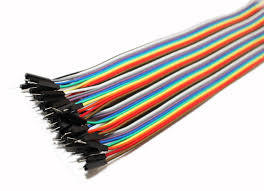Wire Work

You are a new employee at a telephone exchange. When you joined, the company put up a cable with 120 wires to establish connection to a nearby telephone exchange, exactly 10 km away. However, the company laid the wrong kind of wire, and now it needs to be identified. The problem now is that the wires aren't labeled or marked in any way, and thus it's difficult to determine which connections at each end aren't possible. Your boss has asked you to identify and label the wires at both ends without ripping it all up. You have no transport and only a battery and light bulb (assume minimal resistance) to test continuity. You have an infinite supply of tape and markers for labeling the wires. What is the shortest distance in kilometers you will need to walk to correctly identify and label each wire? (assume that the simple battery-lightbulb circuit works over all 10 km of the wire)
The answer is 20.
This section requires Javascript.
You are seeing this because something didn't load right. We suggest you, (a) try
refreshing the page, (b) enabling javascript if it is disabled on your browser and,
finally, (c)
loading the
non-javascript version of this page
. We're sorry about the hassle.
Note that 120 = k(k+1)/2 We can divide cables into groups of 1, 2, 3 …., k Therefore k=15. In every group, all cables belonging to that group are marked now. Now, we go down (first trip: 10 kilometers). Obviously, since you have grouped the cables belonging to group i, continuity meter will show them connected with exactly i-1 other cables. So we have determined following groups, 1, 2 , ... , k. Now, we take one cable from each group (1/1, 2/1, 3/1, .. k/1) and mark them. First group will be of size k, let us call the group as k’. Similarly, second group will be of size k-1 ( because group 1 had only one cable, which was consumed in forming group k’) The last group will have size 1. Now we go back (second trip). Original group of size 1 was determined in the first trip itself. For group 2, if a cable is connected to k-1 other cables then it is 2/1, if it is connected to k-2 other cables then it is 2/2. Similarly we can identify every wire in every group. So, two trips back and forth: 20 km.